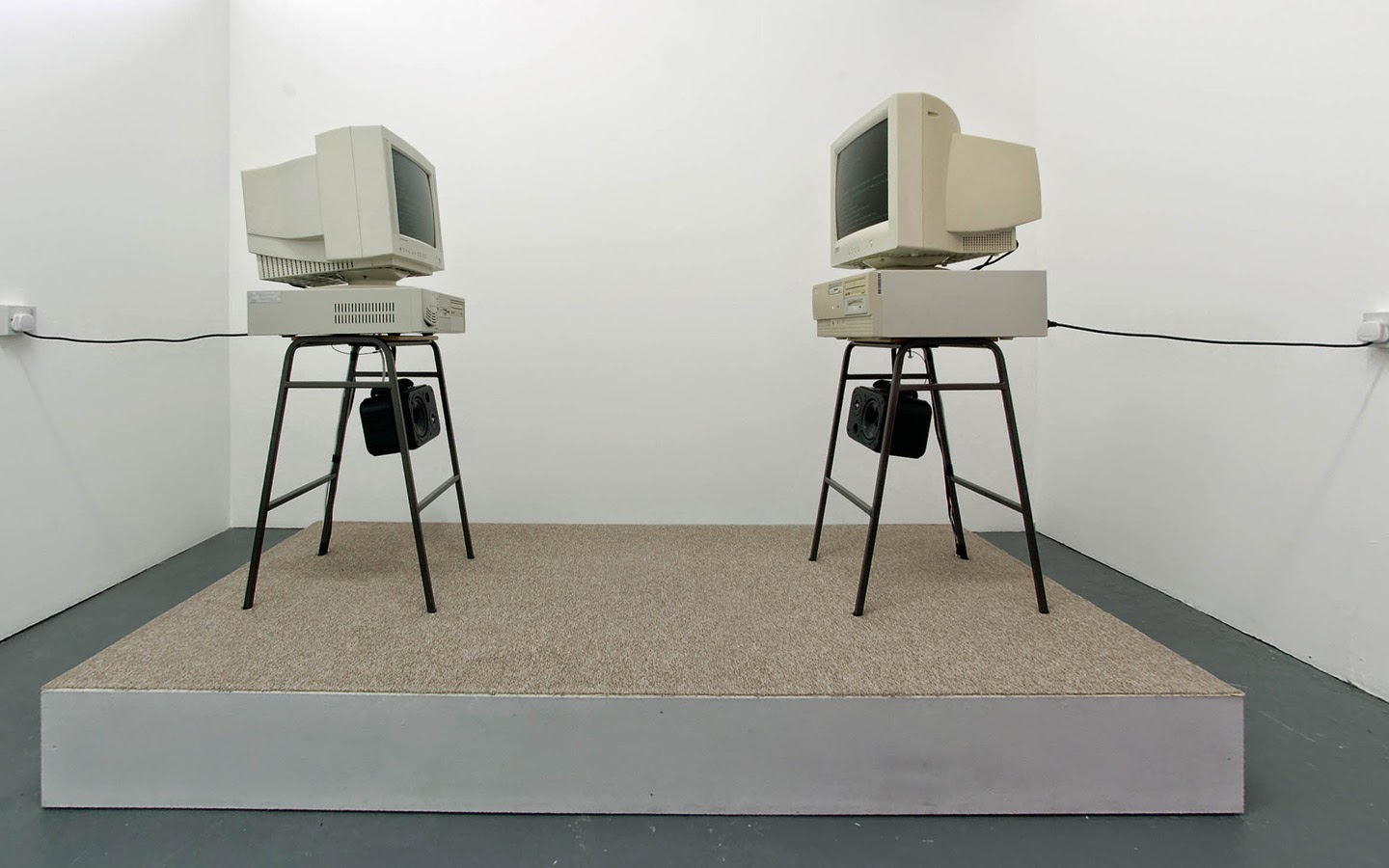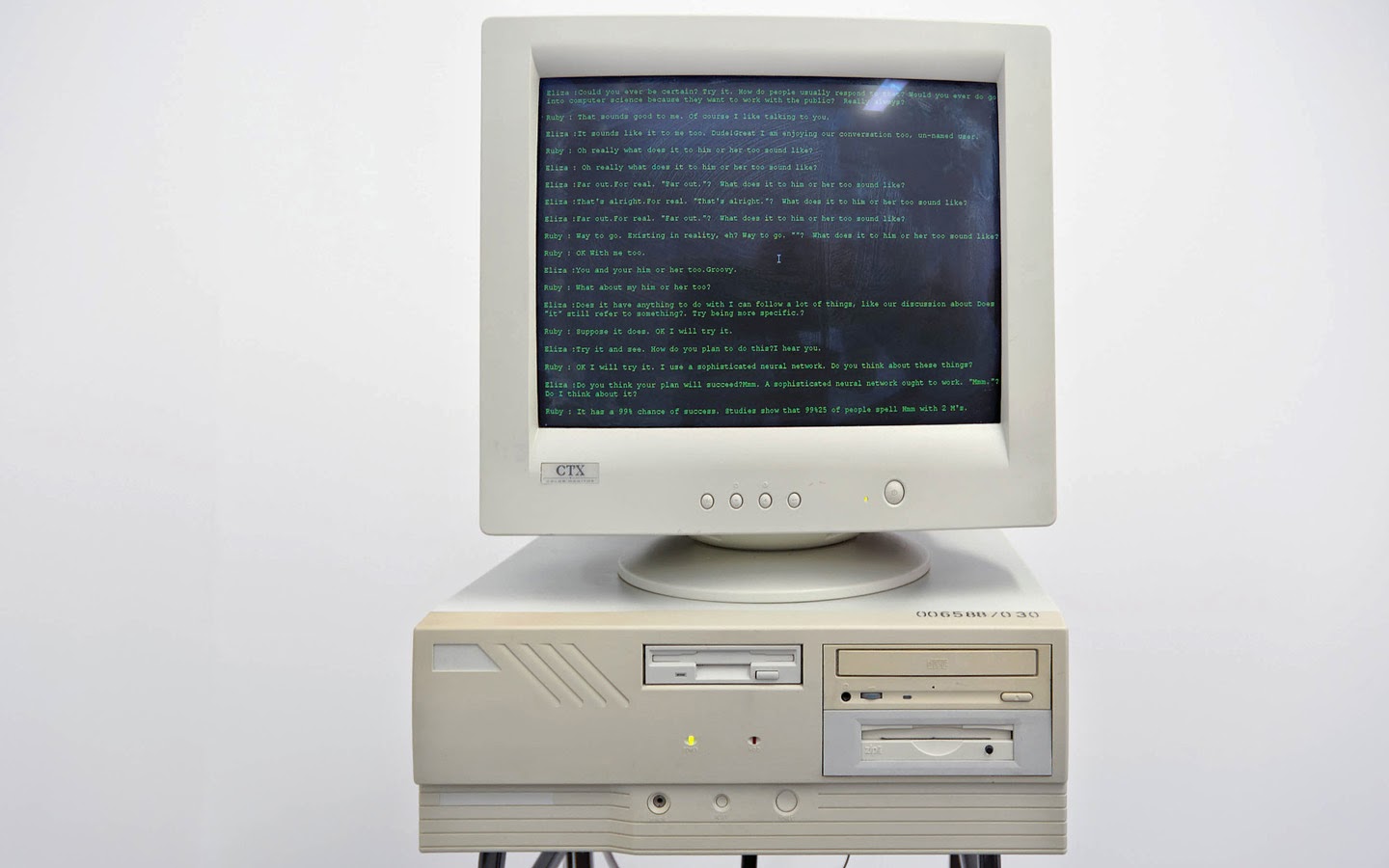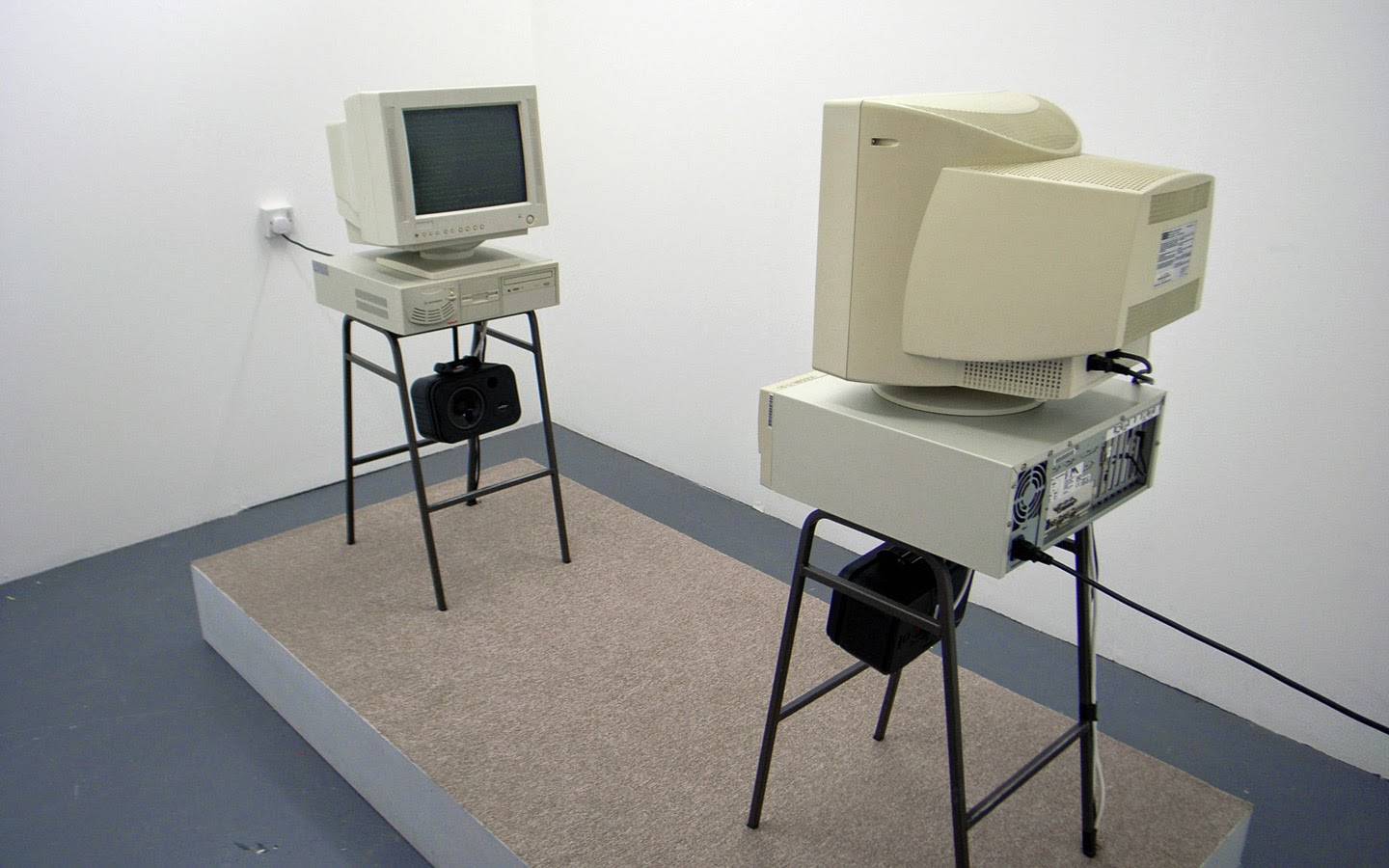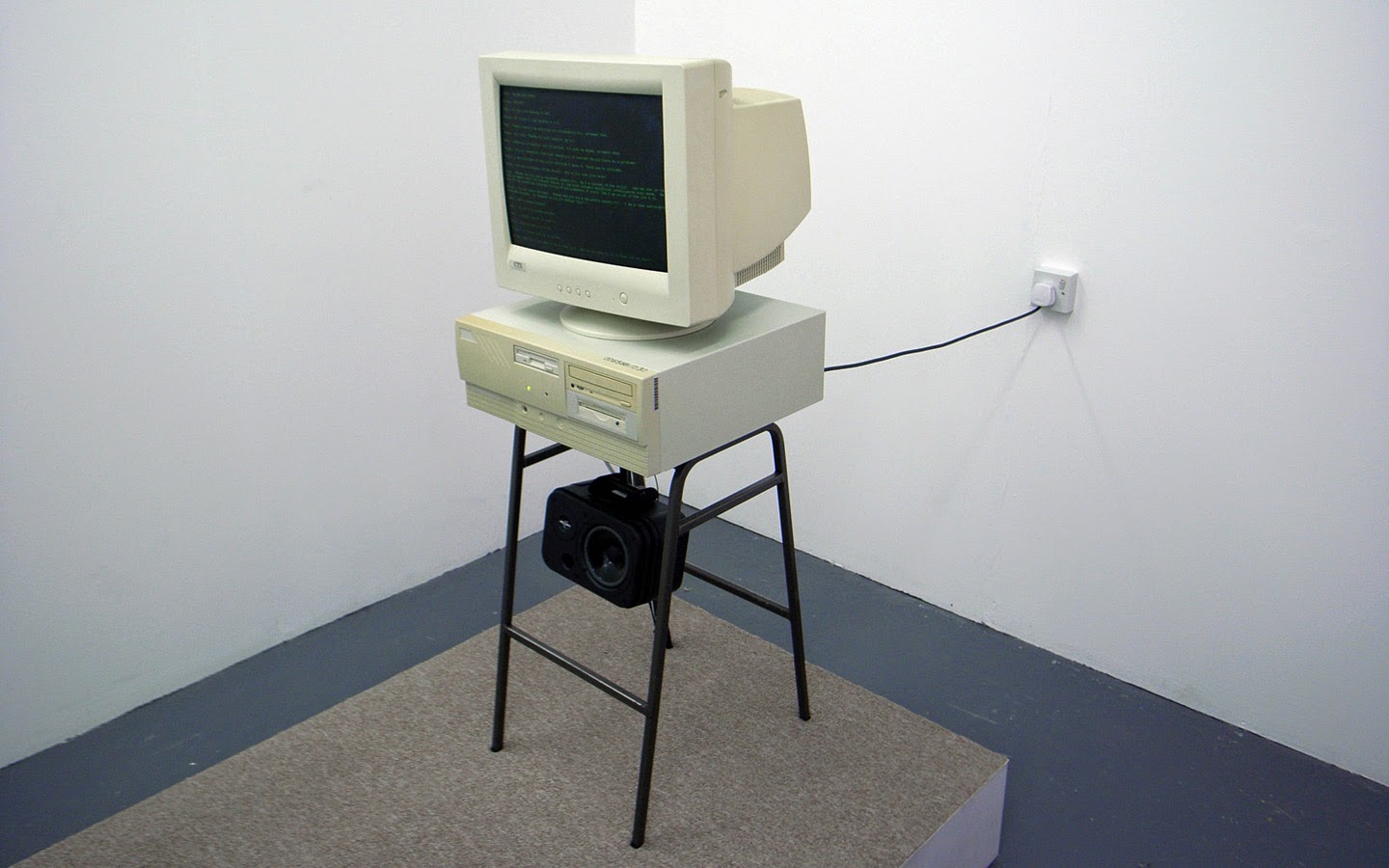Exploring the Limitations of AI in Emulating Human Emotions
This work is a commentary on the skewed logic of trying to get computers to emulate human emotions. No matter how advanced computers become, they will always be limited by the pre-existing knowledge and responses programmed into them by humans. In contrast, if Ruby and Eliza were to communicate using their own language, they would be able to do so instantly and without difficulty.
The taut wire used in the installation also serves as a metaphor for the limitations of the computers. Just as the wire would break if pulled too tightly, the computers would shut down if pushed beyond their capabilities.
As the field of artificial intelligence continues to advance, new technologies are emerging that have the potential to revolutionize the way we create and experience art. For example, OpenAI’s next-generation AI technology is capable of generating highly realistic, human-like text, images, and videos. This technology could be used to create new forms of art that blur the lines between the human and the machine, or to create interactive experiences that allow viewers to engage with AI-powered characters in real-time.
Final thought about the the future of Artificial Intelligence
“Ruby & Eliza” offers a glimpse into the limitations of current AI technology and raises important questions about the future of human-machine interaction. As we continue to push the boundaries of what is possible with AI, it is important to consider the ethical implications of these developments and to strive for a future in which technology enhances, rather than replaces, human creativity.
As the field of artificial intelligence continues to advance, new technologies are emerging that have the potential to revolutionize the way we create and experience art. For example, OpenAI’s next-generation AI technology is capable of generating highly realistic, human-like text, images, and videos. This technology could be used to create new forms of art that blur the lines between the human and the machine, or to create interactive experiences that allow viewers to engage with AI-powered characters in real-time.
Materials used
The materials used in the installation include walls, power outlets, custom power cords, a plinth, carpet, two computers, speakers, chairs, and software. The piece was exhibited at the Kingston University Degree Show in 2007.
References
Weizenbaum Joseph “Joseph Weizenbaum in Conversation with Sabine Breitsameter” 2002 (Accessed 06.05.2007) – available at http://www.swr.de/swr2/audiohyperspace/engl_version/interview/weizenbaum.html
Wikipedia “Strong AI vs. Weak AI” 2007 (Accessed 06.05.2007) http://en.wikipedia.org/wiki/Strong_AI_vs._Weak_AI
Wikipedia “Artificial intelligence” 2007 (Accessed 06.05.2007) http://en.wikipedia.org/wiki/Artificial_intelligence
Wilson Stephen “artificial intelligence research as art” 1995 (Accessed 06.05.2007) http://www.stanford.edu/group/SHR/4-2/text/wilson.html
Silburn Ben “Can computers be creative?” 2001 (Accessed 06.05.2007) http://news.bbc.co.uk/1/hi/sci/tech/1647086.stm
Veltman Chloe “Corner of Art Place and Tech Lane” 2001 (Accessed 06.05.2007) http://www.wired.com/culture/lifestyle/news/2001/12/48836
Luger F George “Artificial Intelligence” 2002 (Fourth Edition) – Pearson/Addison Wesley
ISBN 0-201-64866-0
Rich Elaine, Knight Kevin “Artificial Intelligence” 1991 (Second Edition) – McGraw Hill
ISBN 0-07-100894-2
Kurzweil Ray “The age of spiritual machines” 2001 – Texere
ISBN 1-58799-122-5
Dreyfus s Hubert, Dreyfus e Stuart “Mind over machine” 1986 – The free press
ISBN 0-631-15126-5
Pylyshyn w Zenon “The Robot’s Dilemma” 1987 – Ablex Publishing Corporation
ISBN 0-89391-371-5
Dyson george “Darwin among the Machines” 1997 – Penguin Science
ISBN 0-140-26744-1
Casey Alison “The essence of Artificial Intelligence” 1997 – Prentice Hall
ISBN 0-13-571779-5
Poole David, Mackworth Allan, Goebel Randy “Computational Intelligence, a logical approach” 1997 – Oxford University Press
ISBN 0-19-5102070-3
Born Rainer “The case against Artificial Intelligence” 1987 – Croom Helm
ISBN 0-7099-5923-0






